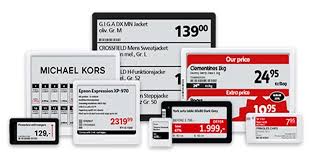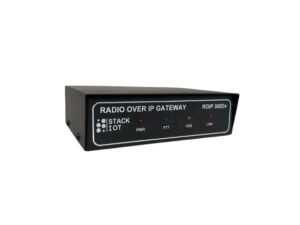Reliability, promptness, and customer experience are king in the current-day retail environment which is rapidly changing. The problem which retail chains must face is the necessity to keep up with innovations, therefore ensuring cost-effective management. Now in comes Electronic Shelf Labels (ESL) – a disruptive technology that is revolutionizing shelf management in terms of pricing and product information.
This blog explores the advantages of electronic shelf labels, the empowering aspects of having them and real-time technology and why smart pricing, ESL technology is worth investment in the retail chains nowadays.
What is Electronic Shelf Labels?
Electronic Shelf Labels (ESL), are digital price tags that display prices and information of products on the retail shelves which are portrayed electronically. They are substitutes to traditional paper labels and are an e-ink or LCD screen that is linked to centralized pricing system through wireless communications.
The retailers are able to do this remotely and update prices, promotions and details of products within the multiple stores instantly and without manual effort.
Advantages of ESL to the retail chains
1.Up to date pricing in Real-time.
Among the greatest benefits of the ESLs there is an immediate in-time update of prices. Retail chains are able to:
- Be very responsive to market shifts, the actions of competitors, or a promotion
- Develop dynamic prices in order to maximize sales and margins.
- Eliminate manually entered errors in price change
This real time process allows customers to be confident of getting the right prices all the time, thus enhancement of trust and compliance.
2. Saving in labor cost
Manual prices need to have the staff changing the paper tags store by store, which is cumbersome and expensive. In the case of ESLs, it can perform the price changes remotely and automatically without distracting the staff being occupied attending to customers and other activities.
3. Increased Pricing Accuracy
Labelling using paper is subject to human error that can result in a miss print or slow updates. Such errors are eradicated using ESLs as pricing information in the central system is synchronized, and this information is the same in all locations.
4. Improved Customer Experience
Customers can discover the necessary information on pricing and products, which provides them with the option to make informed purchases. ESLs may also be able to feature more product information, offers, or QR codes to other content online, to boost engagement.
5. Sustainability
Due to the decreased usage of paper labels, ESLs help retailers achieve their sustainability objectives by reducing the wastage of paper and reducing carbon footprint.
How ESL Helps In Smart Pricing Forces
Dynamic pricing models are becoming increasingly popular among retailers in an effort to optimise revenue. ESLs give the technological support to facilitate:
- Time-based pricing: Vary prices at different times of day on a demand or inventory basis.
- Automation of price-monitoring: Check prices in real time and match competitors.
- Promotion management: Roll out flash sale or time-limited offers immediately
- Inventory-based pricing: Reduction in price of product that is not moving well in the shelves or close to its expiry date.
With the conventional pricing systems, such strategies can be difficult to achieve but easy to deploy through ESLs.
What are the reasons to Purchase Electronic Shelf Labels into Your Retail Chain?
Investments in electronic shelf labels arm the retail chain with flexible solutions in terms of pricing which are future-proof. The following factors are among the reasons why ESL is worth buying:
- Centralized pricing: Price in hundreds or thousands of stores and be able to change prices on one platform.
- Speed: Reduce the time it takes to update prices, whether it is days or hours to minutes.
- Accuracy: Lower pricing mistakes and customer claims by an extreme margin.
- Flexibility: Change pricing in line with current market trends on the fly.
- Integration: ESLs are able to connect into current POS and inventory management systems.
Implementation Considerations
Retail chains are advised to take into account:
- Wireless infrastructure: Stable net connectivity in order to do updates.
- Label longevity: Select ESLs that can work in retail set up and in various temperatures.
- Integration of a system: It must be compatible with the pricing and inventory software.
- User training: Training of the staff in dealing and troubleshooting with the ESLs.
Case Study Snapshot
| Metric | Before ESL Implementation | After ESL Implementation |
| Price Update Time | 3 days | 10 minutes |
| Pricing Errors | 5% | 0.5% |
| Labor Hours on Pricing | 120 hours/month | 15 hours/month |
| Customer Complaints on Pricing | Moderate | Minimal |
Conclusion
Electronic shelf labels are an attractive alternative to retail chains seeking to enhance operational efficiency, increase pricing flexibility, and increase customer satisfaction. Improved cost efficiency of the electronic shelf labels is not the only advantage of this emerging technology as it will allow smart pricing and real time updating that would make retailers stay relevant in the dynamic market.
Fancy changing your retail pricing strategy? Find stable, scalable ESL solutions and the support needed at StacklOT, your pioneer in retail technology.
FAQs
1. Are electronic shelf labels expensive to implement?
Costs vary by store size and label quantity but are typically offset by labor savings and increased sales.
2. How long do electronic shelf labels last?
Most ESLs use e-ink technology with battery life up to 5 years or more depending on usage.
3. Can ESLs display information other than price?
Yes, ESLs can show promotions, product descriptions, QR codes, and more.
4. Do electronic shelf labels work in refrigerated or frozen areas?
Yes, ESLs designed for cold environments are available to handle low temperatures.
5. Is it difficult to integrate ESL with existing retail systems?
Modern ESL platforms support integration with popular POS and inventory management systems.




